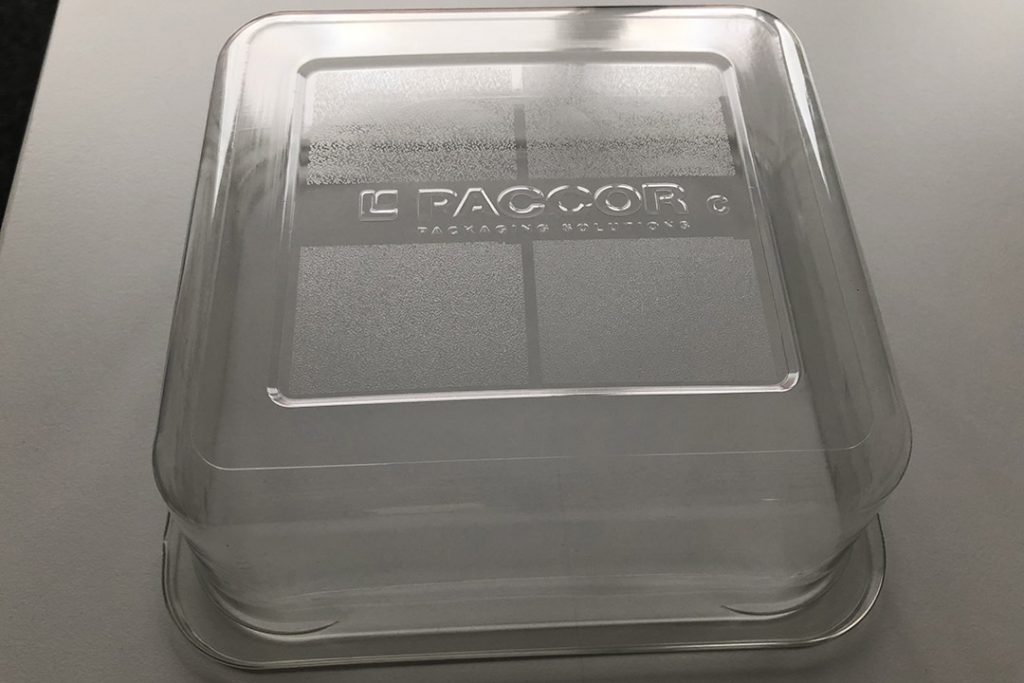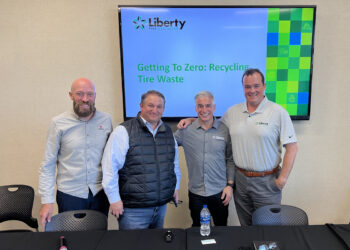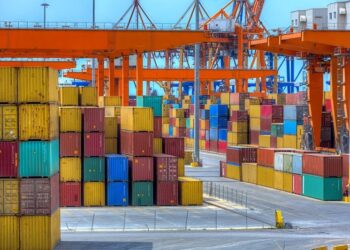A major packaging producer will begin using a discrete barcode technology that can provide optical sorters with critical recycling information.
Berry Global Group announced it will incorporate the barcode technology from Beaverton, Ore.-based tech company Digimarc on its plastic packaging. The digital barcodes can be incorporated into labels or the plastic packaging itself, but they’re not perceptible to the eye.
Digimarc’s technology is already used around the world in currency, identification cards, video broadcasts, products for sale in retail stores and other applications. When applied to recycling, its barcodes can enable an optical sorter to fire on an item based on a number of characteristics, including material composition, the product it held, recyclability versus compostability, brand, and more.
As a result, the watermarking technique can help a materials recovery facility (MRF) or plastics reclaimer accurately sort dark-colored packaging, multi-layer films, bottles with full-body sleeve labels, plastics with problematic additives or other types of challenging packaging. Meanwhile, the barcodes do not inhibit simultaneous use of NIR detection, and they can be read even if the package is partially obscured or crumpled, according to Digimarc, a 25-year-old publicly traded company.
In November, BBC News broadcast a piece exploring the technology and its recycling potential.
From HolyGrail 1.0 to 2.0
In 2019, a three-year European project called Holy Grail wrapped up. The project, which was led by Gian De Belder of Procter & Gamble and facilitated by the Ellen MacArthur Foundation, researched and tested digital barcode versus fluorescent tracer technologies for marking packaging. The latter involves applying a substance to the package that glows under a UV lamp, allowing optical sorters to separate the package as needed.
According to Berry, the project partners decided to pursue digital watermarks. Digimarc is a driving force behind the follow-on project, HolyGrail 2.0, which recently kicked off and is meant to advance the technology and push it into the marketplace for use by the recycling industry.On Oct. 22, during the K show, a plastics trade event held every three years in Düsseldorf, Germany, HolyGrail 2.0 kicked off with a demonstration of the digital barcode technology. The demonstration was held at equipment supplier Tomra’s recycling headquarters in Mülheim-Kärlich, Germany, an hour-and-a-half drive from Düsseldorf. The event, which drew about 140 people, included presentations from Digimarc, Tomra, Procter & Gamble and Verstraete, a labeling company owned by Multi-Color Corp.
Larry Logan, Digimarc’s chief evangelist (a job title equivalent to business development manager), recently told Plastics Recycling Update HolyGrail 2.0 is expected to be moved under the auspices of a European governance body.
In announcing its participation in HolyGrail 2.0, Evansville, Ind.-based Berry Global said it would work with Digimarc to add the code to drink cups and thin wall lids for containers. Berry already offers packages with Digimarc’s codes to boost consumer appeal of certain products by linking their smartphones to additional product information.
“We have been collaborating with Digimarc to utilize their technology in our decoration for years,” Berry Global Marketing Communications Manager Amy Waterman told Plastics Recycling Update. “The digital barcode offers great potential for accurate sorting of recyclables.”
Learn more in person
Digimarc’s barcode technology will be discussed during the Association of Plastic Recyclers (APR) Technical Forum at the 2020 Plastics Recycling Conference and Trade Show. Larry Logan of Digimarc will present the technology alongside Robert Flores of Berry Global and Craig Bushman of Multi-Color Corporation.
The 2020 Plastics Recycling Conference and Trade Show is set for Feb. 17-19 at the Gaylord Opryland Resort and Convention Center in Nashville, Tennessee. Head to plasticsrecycling.com for all the latest info on attending, sponsoring and exhibiting.In December, packaging company PACCOR also announced it was adopting Digimarc’s code. During K show, PACCOR demonstrated sorting of a PET thermoform the company created with the barcode embossed in it.
A number of next steps
Released in May 2019, HolyGrail 1.0’s final report noted work remains to be done to use the technology at scale. Additionally, a question remains of “how to finance the still significant investments required to retrofit machinery in recycling facilities.”
“Project HolyGrail demonstrates that the science and invention aspects necessary for improved sorting are already in place, and the engineering and development aspects now need to be addressed,” the report concluded.

Digimarc is also continuing to develop the technology for the recycling industry. Logan said the company is creating commercial specifications for lights and cameras used to detect the barcodes. The immediate goal is to create an add-on module for sorters, but eventually the optical sorter manufacturers will be able to integrate the barcode-reading capabilities into their systems, Logan said.
At the demonstration in Germany, the camera system captured 150 frames per minute on a belt moving three meters per second. Those numbers are still in development, however, said Ravi Sharma, who is director of R&D engineering at Digimarc. He noted Digimarc is looking at optimizing the system for a belt speed of five meters per second.
Key to the technology is a database of product characteristics. The goal is not to encode all the details about the product in the digital watermark, but rather to have the watermark point the computer system to a database where information can be added, removed or changed.
Logan also noted that a trusted third-party organization will hold the data, not Digimarc.
To receive the latest news and analysis about plastics recycling technologies, sign up now for our free monthly Plastics Recycling Update: Technology Edition e-newsletter.

























